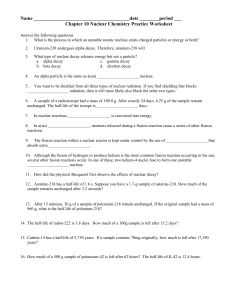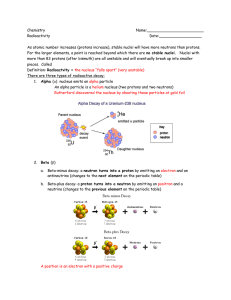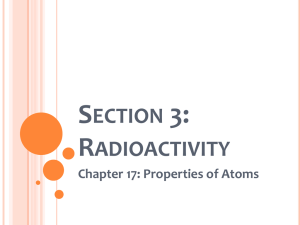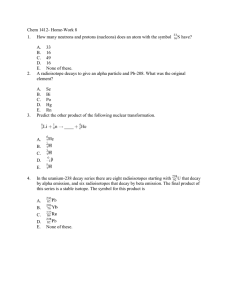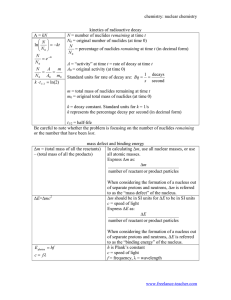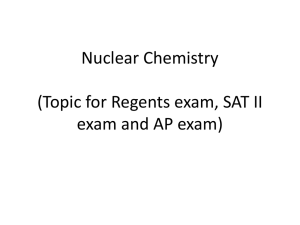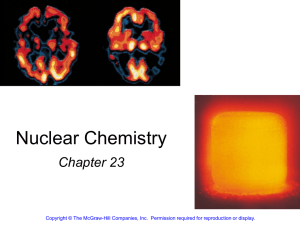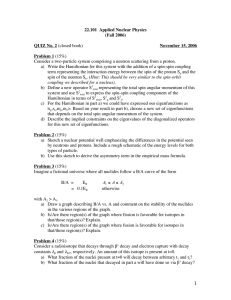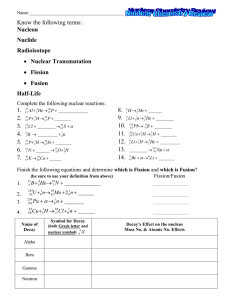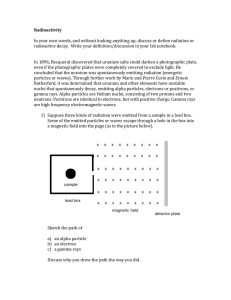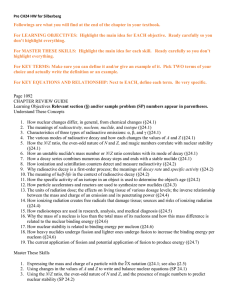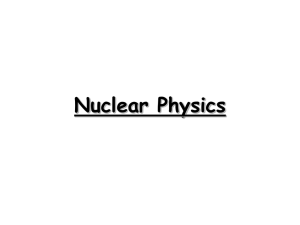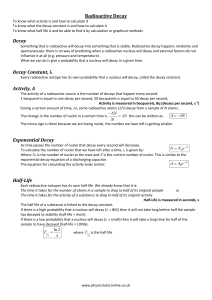Introduction to Nuclear Chemistry I Prof. Cody Folden
advertisement
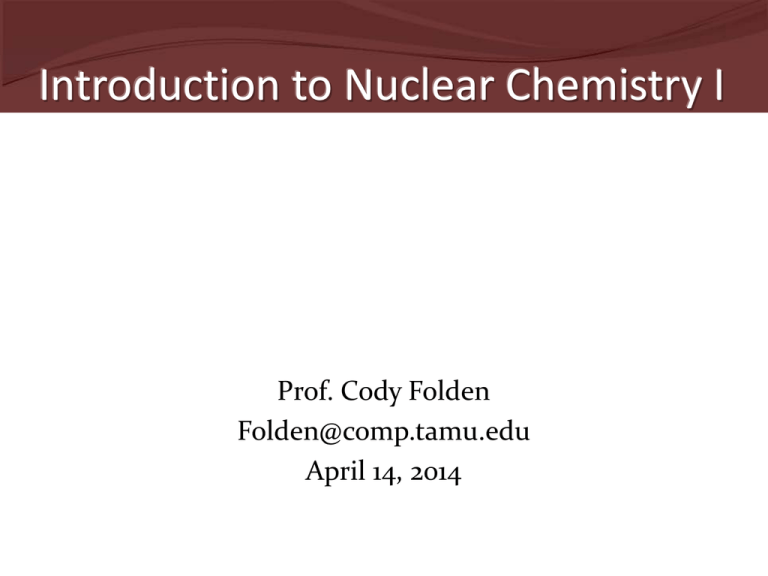
Introduction to Nuclear Chemistry I Prof. Cody Folden Folden@comp.tamu.edu April 14, 2014 Chart of the Nuclides The nuclear scientists’ equivalent of the periodic table. Chart of the Nuclides Colors correspond to the nuclide’s half-life. Where are the different beta decay modes favored? Yellow: α Blue: β + Purple: β – Protons → Green: Spontaneous Fission Neutrons → Example What is the activity of 1 kg of 232ThO2 in decays per second (s–1)? The half-life of 232Th is 1.40 × 1010 y and its atomic weight is 232.038 g/mol. Fraction NOT Decayed Radioactive Decay e -λ t Radioactive decay follows an exponential decrease. Nuclei with large λ have a faster decay rate than a similar number of nuclei with a small λ. How do you measure the half-life? The half-life t1/2 is the time it takes for half a sample to decay away. How do you measure t1/2? Start with: A = A0e–λt Re-arrange: ln A = –λt + ln A0 Measure A vs. time. Plot the data. Measure the slope. This is –λ. Calculate t1/2 = (ln 2)/λ. Measure the intercept. This is (ln A0). Slope = –λ = –0.0275 min-1 t1/2 = (ln 2)/λ = 25.2 min Our Very Existence There is a very important radioactive decay that you should know about: n → p + e − + ν + Energy These protons are fused into heavier elements by stars, releasing energy in the process. Neutrons alone cannot make atoms. If the reaction ran in the opposite direction then there would be no elements. You owe your very existence to nuclear science!








